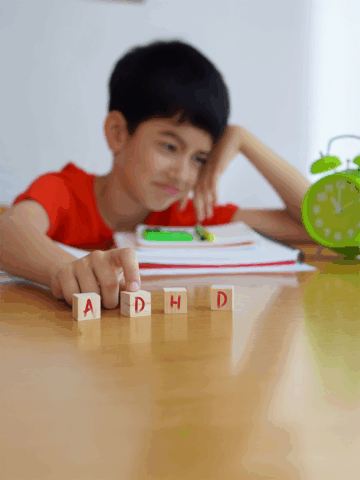What is an Individualized Education Program (IEP)?
Updated in December 2024
An IEP is a plan for students in public school who need extra help with learning because of a disability. It is an official agreement made between the student’s caregiver and school district.
There are national (federal) and local (state) laws that protect students who need help in school. The Individuals with Disabilities Education Act (IDEA) is a national law that helps protect students by making sure they get a free appropriate public education (FAPE). This law gives students extra help, such as special instruction in reading or math, changes or supports to learning, and therapies.
Schools also have to teach kids in the “Least Restrictive Environment” (LRE). This means that schools should not separate students just because of their disability, but should keep them with their peers as much as possible. For example, a student who struggles with reading might get one-on-one or small group instruction, but should have other classes in the regular classroom with their peers.
Who is eligible for an IEP?
To receive an IEP, a student must:
- Be 3-22 years old
- Have a disability that negatively impacts educational performance (makes it hard for them to succeed in school without extra support)
IDEA groups disabilities into 13 common categories. Schools do not make a clinical diagnosis, but they determine if a child is eligible for special education services under one or multiple of the following categories:
- Specific learning disability
- Speech or language impairment
- Other health impairment (e.g., epilepsy, congenital heart disease, cancer, ADHD)
- Autism
- Intellectual disability
- Emotional disturbance
- Developmental delay
- Multiple disabilities
- Hearing impairment
- Orthopedic impairment
- Visual impairment
- Traumatic brain injury
- Deaf-blindness
A family does NOT need to have legal immigration paperwork for the student to get an IEP. The student also does not require a clinical diagnosis to qualify for services, but it is encouraged to provide a better picture of the student and their possible learning challenges.
Typical problems that might be addressed by an IEP include the following:
- Disabling health impairments
These are medical (such as epilepsy, cancer or heart disease) and/or developmental conditions (like Autism) that make learning more difficult and require extra help and support to make sure students are able to learn. For example, conditions such as ADHD can affect the student’s ability to focus in the classroom. - Specific learning disabilities
A specific learning disability (SLD) affects a child’s ability to read, write, or do math. SLDs can also affect how fast they can complete schoolwork. Without support, SLDs can make learning and schoolwork very hard. Because SLDs involve brain functioning, formal testing by a neuropsychologist can be helpful to make the diagnosis. A child can have a SLD and still be smart or have strong thinking skills. For example, a child may have a medical diagnosis that puts him or her at a higher risk for an SLD in math, but the student may also have great vocabulary or language skills. Formal neuropsychological testing can help families see their child’s personal strengths and what kinds of skills are harder for the child. - Emotional disabilities
Some children have emotional or behavioral problems that get in the way of learning. These problems can look like intense fear or sadness. They can also look like rule-breaking and trouble with other students. - Cognitive delays and intellectual disabilities
Some students have significant cognitive delays (difficulty with thinking skills such as reasoning and processing information) and poor adaptive skills (daily living skills such as grooming/bathing/getting dressed, knowing how to stay safe).
What types of IEP services or placements are available?
Here are some examples of what types of services students can get (and where they happen):
- Modifications or accommodations in the general education classroom
The student stays in the same classroom with modifications (changes) and/or accommodations (supports) unique for each child’s needs. For example, a child might do easier work than their peers or change seats to be closer to the front of the class so they can hear and see the teacher better. - Resource Specialist Program (RSP)
The student stays in the same classroom with modifications (changes) and/or accommodations (supports) which are unique for each child’s needs. For example, a child might do easier work than their peers or change seats to be closer to the front of the class so they can hear and see the teacher better. - Additional Support Services
These include whatever additional services are needed by the child to benefit from his or her education. Examples include services such as speech and language therapy, occupational or physical therapy, nursing assistance, or psychological counseling. - Special Day Class (SDC)
Children with more complex needs may be taught in a “special day class” (SDC). In SDC, the students get lots of extra support. Children in a SDC may be also “mainstreamed”, or temporarily join a general education classroom, for parts of their day or week. - Non-public School
A non-public school is a special school designed to help children with significant special needs.
How the IEP process works
How do caregivers request an IEP for their child?
A written request should be made to the school district where the child lives. Any person can make a request for an IEP, although this usually comes from the child’s caregiver or teacher.
The request for an IEP evaluation should always be made in writing.
The request for an IEP evaluation should always be made in writing (email is a good idea because families have a record of when the notice was sent).
In the letter you must explicitly ask for an IEP evaluation. Send the letter to the school principal or to the director of special education for the school district.
Sample Letter
Request for Special Education Assessment and IEP Meeting
(Date)
(Person in District Responsible for Special Education)
(District Street Address)
(District City, State, and Zip Code)
Re: (Student’s name and Date of Birth)
Dear (Name of Person in District Responsible for Special Education):
I am requesting a full assessment of my child in all areas of the child’s suspected disabilities for the purposes of determining whether or not (name of child) qualifies for special education services. I understand that I am to be given an assessment plan authorizing this assessment within fifteen days of your receipt of this request.
I am also requesting that an IEP meeting be set within the time required by law so that we may discuss the results of the assessment and the type of educational program my child requires.
My child attends the (insert name of school). You may call me at (insert telephone number where you can be reached during the day) during the day or at (insert evening telephone number) in the evening if you have any questions regarding this request.
Sincerely,
(Signature)
(Type or print your name)
cc: (Principal of local school)
Who attends the IEP meeting?
The IEP is developed by a team of people that must include:
- The caregiver
- A school administrator
- A general education teacher (if the child attends a general education classroom)
- A special education teacher
- The school psychologist
Other people who sometimes attend an IEP might include:
- A speech and language specialist
- An occupational or physical therapist
- An adaptive physical education teacher
- Other service providers or professionals involved with the child
Families may also bring a representative to the IEP meeting, such as:
- A trusted relative or family friend
- A medical team member or educational liaison
- The child’s counselor or therapist
- An attorney
- If families bring an attorney to the IEP meeting, they must notify the school district 5 days prior to the meeting. Also, bringing an attorney to an IEP meeting is generally NOT recommended unless an issue is in dispute.
If the child’s caregiver does not speak English, the school district must provide an interpreter at the IEP meeting. The school district must also offer to have the written IEP translated into the language of the child’s caregiver upon request.
Learn tips to help you be an active participant at your child’s IEP meeting
IEP Timetable
The school district must follow certain time guidelines in response to a written request for an IEP evaluation:
Day 1 After receiving letter: Official Special Education Referral
By Day 15 caregivers receive a written assessment plan
After the caregiver signs and returns the assessment plan, the school has 60 days to assess the student and hold an IEP meeting. Caregiver consent is necessary for the IEP assessment. Caregiver consent is also necessary before the IEP can be put into effect.
The IEP is a legal document
- If caregivers are uncertain about anything, or if they do not agree with the IEP findings and recommendations, they can choose not to sign the IEP.
- Those parts of the IEP that are agreed to by the caregivers can be started while other parts can be rewritten or appealed.
- Families can take a copy of the written IEP home before they sign it in order to review it and think about it.
- Families can request an IEP meeting anytime it is appropriate to change the plan (for example, if the child’s medical or developmental condition changes significantly).





